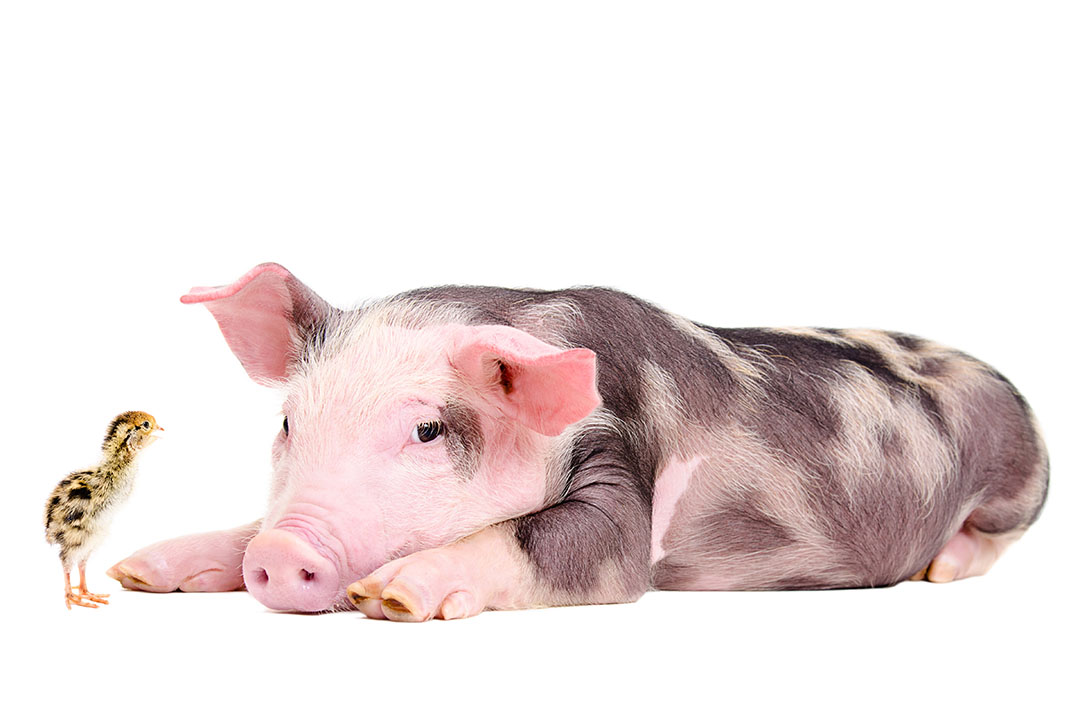Fewer antibiotics make more economic sense

Antibiotic alternatives, both as antibiotic growth promoters and therapeutics, are often seen as effective but expensive, so they are only applied on explicit demands from consumers or governance. Yet, in terms of return on investment good antibiotic alternatives deliver much more than disease management. In healthy animals antibiotics deliver no value, but alternatives still bring benefits.
In the area of antibiotic resistance evaluating alternatives to antibiotics is not an option but obligatory. To examine the difference between a conventional approach and an antibiotic alternative, examples were examined from the field where antibiotics were failing on a piglet farm. In piglets, E. coli are part of a healthy microbiome, even potential probiotics. The field study was undertaken on a farm experiencing a severe outbreak of E. coli K88 with diarrhoea, leading to heterogeneous litters and early mortality. The Italian farm had 150 sows. Piglets were weaned at 28 days. Piglets were fed prestarter from day 10 to weaning, starter 1 to 12 kg BW, starter 2 to 25 kg BW. In May, the outbreak affected piglets between weaning and 15kg bodyweight. This resulted in high mortality (11%) within hours. The survivors continued to be affected by failure to thrive and heterogeneous litters.
The conventional approach: From May to December the farm applied recurrent treatments with colistin/doxycycline in-feed or colistin in drinking water. Additional parenteral treatments with enrofloxacin were administered. Despite the extensive use of antibiotics the situation did not improve. The treatment was pre-empted by three separate antibiograms to assess the level of resistance present in the E. coli populations. The results showed overall good sensitivity to antibiotics, see Table 1. All antibiograms showed low levels of resistance, given the history of frequent use of different antimicrobials. Additionally, it was confirmed that sows were ELISA positive for PRRS at 75/90 days.
The antibiotic alternative focus solution: The following January only parenteral treatments to whole pens with enrofloxacin were continued as needed. The piglet feed was reformulated to contain a slow release form of Ca-formate and citric acid (formyl) at 4kg/t and an algal beta-(1,3)-glucan (aleta) to help support the developing immune system at 0.2 kg/t. Additionally organic acids were added to the drinking water; pH was adjusted to 3.5 – 3.7. The results from the two different treatments can be seen in Table 2.
Reasons for antibiotic/antimicrobial use
Antibiotics or other substances with antimicrobial effects such as zinc oxide are applied regularly in livestock production. Antibiotics will be used in livestock for the foreseeable future. They continue to be used for perceived economic reasons, rather than treating a group of animals for mortality risks. The severe E. coli outbreak showed the extensive use of antibiotics (267 mg antibiotics per kg/BWG), was not able to alleviate symptoms or to decrease mortality. Even the surviving piglets’ performances were affected, impacting body weight gain.
Costs for antibiotics: The perceived low cost of the antibiotics only covers a part of the real costs however. Water lines must be cleaned prior to and after applying the antibiotic. Application requires labour time. Even after application, antibiotics still cause costs. It is well known in humans that after antibiotic treatment the intestinal microbiome is often severely disturbed, leading to diarrhoea and overall dysbiosis. While these effects usually stop without further treatment in humans, in livestock they certainly cost feed efficiency, a key economic factor.
Costs for alternatives: Many of the alternatives which are well established for replacing antibiotic growth promoters (AGPs) can also be used in programmes to reduce the need to treat with antibiotics. In the present study gastrointestinal microflora modulation (formyl, water acidification) and immune system support (aleta), together with the smart use of antibiotics succeeded. Consequently, the amount of antibiotics administered to the animals could be greatly reduced (8 mg antibiotics per kg/BWG).
Cost or return on investment?
Return on investment is easily calculated for antibiotics; cost of treatment over anticipated return due to reduced morbidity and mortality. Treatment in healthy livestock or flocks brings a negative return on investment (ROI) as the cost for the treatment brings no extra benefit. If chosen well and applied correctly, in many cases an antibiotic alternative brings a ROI of at least 1, so that the higher application cost compared to antibiotics is of no concern. The example above is the most extreme, as if there was no working alternative, this would have spelled the end for the commercial farm within weeks for economic reasons.
Good antibiotic alternatives clearly succeed when looking at many farm economics compared to antibiotic use. Consequently, rather than just looking at what is still permitted it makes sense to use alternatives frequently. This is proven to also make antibiotics more effective as evidence clearly shows reduced usage of antibiotics can restore susceptibility even in previously resistant bacteria. Besides, better health has a positive impact on feed conversion and uniformity across all species, something therapeutic antibiotics cannot deliver. The time to replace many antibiotics is now, it makes economic sense and antibiotic resistance is a real concern in all livestock production.
Author: Susanne Kirwan, Kemin







